#microbiota
Text


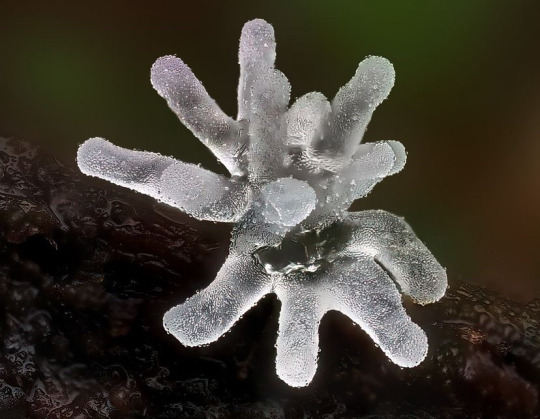
Ceratiomyxa fruticulosa
by Alan Rockefeller
#ceratiomyxa fruticulosa#ceratiomyxa#slime mold#slime mould#myxomycota#forest floor#macro photography#myxomycetes#microbiota#microbiology#microorganisms#texture#moss#nature photography#alan rockefeller
258 notes
·
View notes
Text
Oh yes, i'm normal, i'm just daydreaming about inhaling fungal spores and having it change me to the point where we become one and develop a symbiotic yet codependent relationship with each other.
#yes ive read annihilation why do you ask#L speaks#annihilation#jeff vandermeer#southern reach#southern reach trilogy#biology#biology memes#microbiology#fungus#fungi#wild fungi#mushroom#fungilove#mycology#science#microorganisms#microbiota#microbiology memes#science memes#yeast#mushrooms
604 notes
·
View notes
Text
It's Time for Science! (Aka, I Think Bacteria Are Neat and Want to Show Off my Petri Dishes Like Cool Rocks):
Now, I know what you're thinking
This is K. pneumoniae, known for causing pneumonia, grown on MAC.
MAC, or MaConkey Agar is a type of growth material that changes color when bacteria ferment lactose, and it's used to identify gram negative organisms.
Well, bacteria have membranes that protect them from the environment, much like how we have skin.
"Starry, what the hecc are grams?"
Gram positive bacteria are bois that have Dummy Thicccccccc tm cell membranes
Gram negative bacteria are scrunkily lads that have skinny ass membranes
The bacteria above, K. pneumoniae is just one of these scrunkily lads
And when they're put on this type of media...
They make a really pretty sunset color
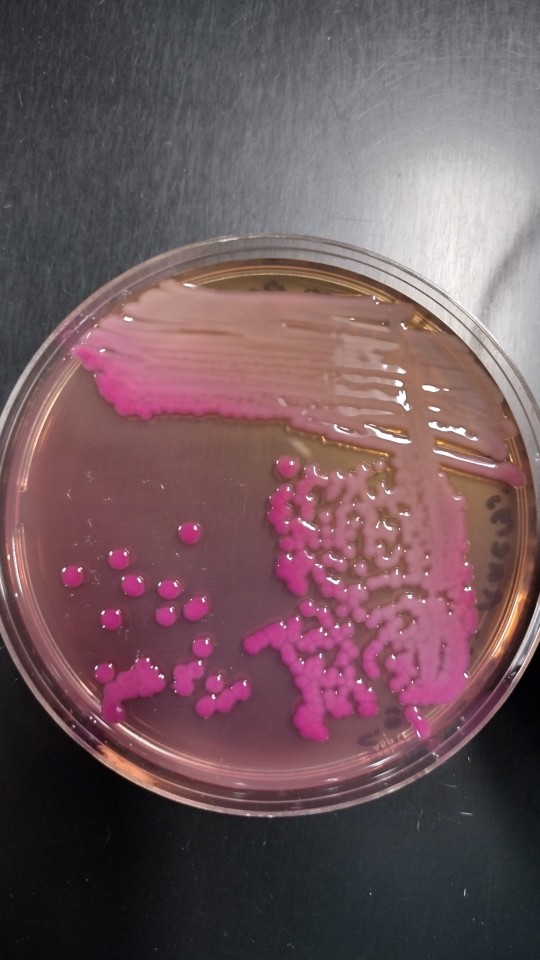
#starrytalks#goblincore#college#its the neurodivergency#bacteria are gross and dangerous but also really cool#bacteria#microbiology#microbiota#biology#cells#science#science side of tumblr#bacterial cells
413 notes
·
View notes
Text
How does one befriend a microbiologist?
43 notes
·
View notes
Text
I recognize exactly zero people follow me for this type of content, but this is the kind of nerd I am. The following post is an exploration of Tommy’s anomalous ability (Red) on bacteria, specifically on gut microbiota systems, as well as the implications. Link to the research paper that finally convinced me to write this post, though I’d deffo been toying with thoughts for a while.
The main question is this:

Some important details that have been established:
Red causes individuals to attack indiscriminately (excluding Tommy)
Red effects germs
Red does not cause the cells in multicellular organisms to attack one another (else the effects would include some symptom of that, such as white blood cells attacking the body. Allergy attacks, the like, I haven’t researched this vein as it isn’t what occurs)
The main idea that I started with was that Tommy’s gut bacteria would be fascinating as a result of the fact he often consumes Red due to not having a fork. Tommy’s main concern is that it makes his meals slimier and taste Red-er, but theoretically there’d be massive disruptions to the stability of his bacteria system. Specifically in the fact he’d be constantly sending it into overdrive competition, likely decimating colonies of helpful bacteria. Instability builds resilience and all that but the constant waves of self destruction would leave decimated diversity and have severely reduced redundancy. He’d almost constantly be in an undesirable stable state and likely unhealthy. Go far enough and you get the question of if he can properly produce all the enzymes needed for digestion. Unless he was getting probiotics pretty constantly, his microbiota would be incredibly unstable and fluctuating wildly. Major health problems would arise.
This is not seen to occur, so it leads me to the question of how Red interacts on the microbiology level. I can see two directions that this can be taken in:
Possibility 1. Stomach acid denatures Red—and other processes to render Red useless.
Red is classified as a biohazard by the SCP Foundation, though it is not entirely clear what that entails. If it’s treated as something biological, its effects could be disrupted by the acidity. Ergo wouldn’t effect digestion. Hurray, Tommy can still eat stuff. (Could possibly still be used for toothpaste? I would have to research mouth bacteria.)
For someone who isn’t Tommy: Good news! All the bacteria in body isn’t now single mindedly trying to kill them. Also wouldn’t be permanently affected by Red should it become integrated into their body via digestion.
This further rises the question of what can be done to eliminate Red’s affects. It is noted to not cause reactions after it has dried. I am assuming there is some type of denaturing from temperature. Furthermore it does not appear to retain effect merely for staying wet. The evidence for this is two fold:
There have not been uncontrolled outbreaks of zombie-like mindless violence from contaminated water.
Presumably Tommy has showered at least once in the last x years. He is canonically mentioned to have showered inside the SCP Foundation, who could be decontaminating all water he uses. However, there is a period of a few months between the appearance of Red and his capture and Mother Innit would NOT allow him to get that stanky.

Ergo Red can be made into a safe state that can come into contact with people both externally and internally without problems. Especially given British/American water sanitation procedures tend to involve bacteria. Because Tommy did not cause a water safety crisis of disastrous proportions, I’m going to assume temperature/UV (possibly) at minimum effect it. Could be internal body heat destroys it. Other possibilities: Acidity naturally, dilution of the substance (minimum dose necessary?), or time since disconnected from Tommy.
Possibility 2. Red only affects super organisms.
Now it’s a strenuous definition, but I think it makes a lot of things easier. The gut bacteria would be considered part of the person. Because frankly if we went all the way and individual cells started fighting each other inside a multicellular being…it would drastically conflict with what’s depicted. So Tommy wouldn’t be destroying his digestive system and probably a lot of other things.
A question would then be ‘what constitutes a super organism?’. Possible solution:
Souls. They are an integral aspect of the Fault magic system. However, based off my components of a soul (memory, emotion, true name/agency, bonds) it rises the question of if the bacteria in question have souls. Which I kinda don’t think they do. Then again they are single cell organisms so that wouldn’t be a concern on their own save when they’re contributing to the whole. A body integrates their gut microbiota into their soul, likely through the bonds aspect Red recognizes via the individual soul. Bacteria then count as individuals unless they’re contributing to a multicellular organism, in which case they’d not fall into infighting. This is viable because Red is shown to affect bodiless souls such as voidlings. Therefore it has some recognition of the soul for the purpose of constructing super organisms.
Now, if it’s effecting exclusively souls that’s a problem, because I’m still unconvinced germs have a soul by Fault’s definition of one. I think Red transcends both soul and being, which ever is necessary in order to cause conflict. I’d go into that but this is already lengthy and it would involved insanely massive spoilers.
One problem: Tubbo is a super organism by classic definition. However, Tommy’s Red does not affect the whole of Tubbos’ hive mind, instead individual bees. Though the personality known as Tubbo is an amalgamation of many souls, so I think that can function as explanation since it is shown the bees technically have their own thoughts/emotions even if they’re very small bee feelings. Bees have their own definition as super organisms due to their own digestive bacteria. Turtles all the way down. But notably, not all the way up, or we could involve macro cohesive units such as, say, entire countries going to war.
Plants though. Very different forms of sentience. And if we take into account mycorrhizal networks and consider them as creating super organisms (not of the same species, but as earlier established between humans and gut bacteria this isn’t a pre-requisite of classification according to Red) what happens once contaminated by Red? Is an entire community of plants going to attack? What would that even look like?
So the biggest question of all: What happens when Tommy touches grass?
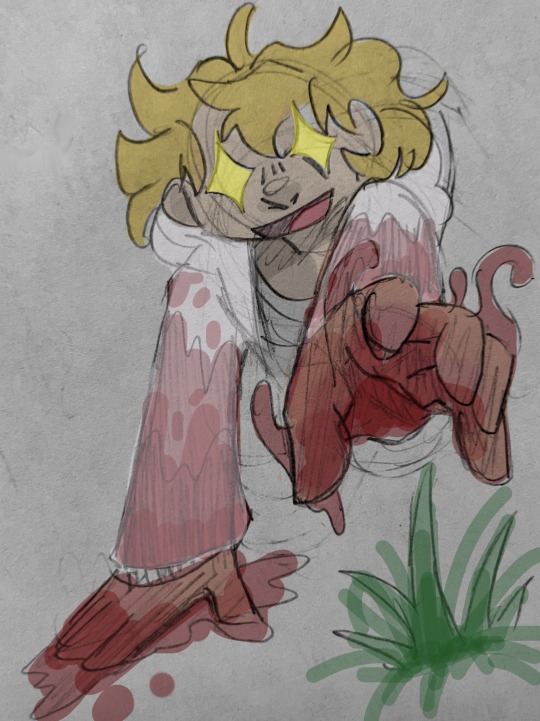
#Now. I’m not sure what’s actually going to end up mattering#(Trick question: none of it save like three lines)#But it’s important. To ME.#Autism won today#sbi scp au#tommyinnit#scp tommyinnit#scp au#scp#Fault au#microbiota#biology#microbiology#Bacteria#world building#magic system#No suspension of disbelief we die like my time management skills#Fault analysis#touch grass#0 note post let’s gooooo#I’m not even done bc I’ve been thinking about the others microbiota systems too#I wish i. Didn’t.#Girl help the biologist got to my magic system#something to nom on
32 notes
·
View notes
Text

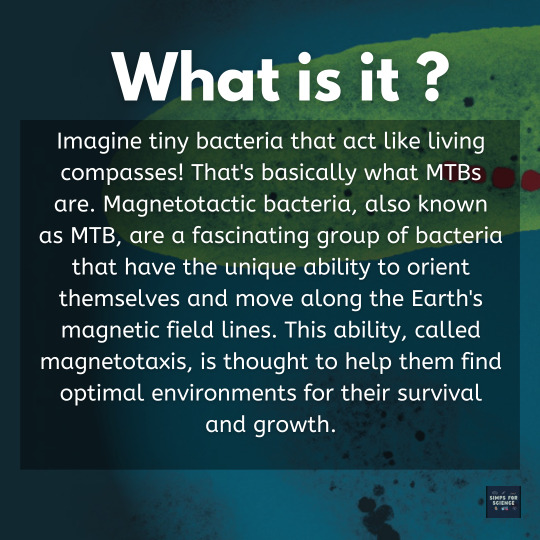


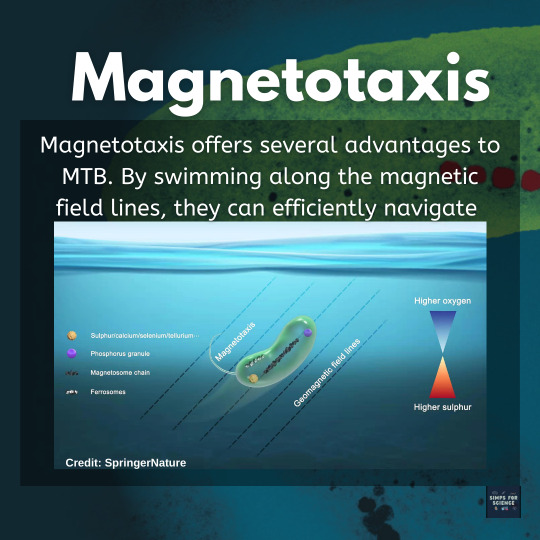
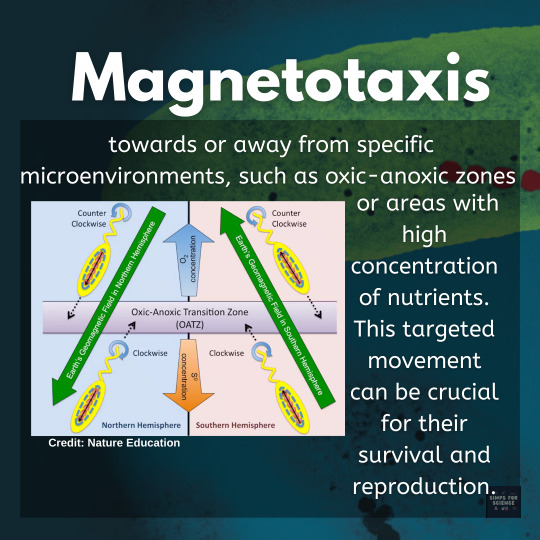
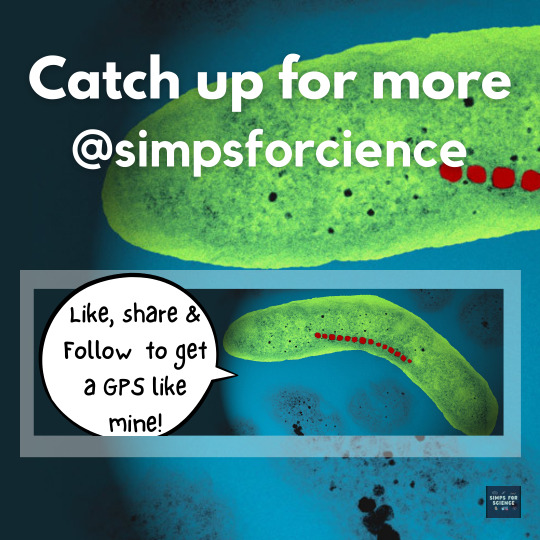
🤔💭 Have you ever imagined anything like a 'Living Compass' ?🧭🦠These tiny titans cum bacteria have superpowers: they navigate using Earth's magnetic field! Swipe ➡️ through this post to know how these beings are able to sense north ⬆️ 🧲 wherever they go!
#science#science facts#education#discover#scicomm#study blog#explore#research scientist#physics#earth#bacteria#bacteriology#microbiology#microbes#microbiota#microbiome#magnetism#magnetic#magneto#magnetite#magnetic field#magnets#magnetosphere#scientist#scientific illustration#cool science#scifi#sci fi and fantasy#scifiedit#simps for science
11 notes
·
View notes
Note
Birds got rid of their microbiomes to fly!!!??? That’s so wild do you have any more info on that? Like how have they adapted to not having a micro biome?
Okay so you know how I said I get shit wrong? This is one of those things
I remembered it from my ornithology class but apparently the research has shown other things since (I've been looking into it which is why I've taken forever to answer asks)
Essentially, birds have very VARIABLE microbiomes, with many not having much in the way of one, and others having lots
And it doesn't correlate with flight
So my bad you guys
29 notes
·
View notes
Text

The harvest has been plentiful
5 notes
·
View notes
Text
How cesarean section affects a baby's gut microbiota
Chronic, immune-mediated, non-communicable diseases and obesity have become more common in the Western world in recent decades. At the same time, the number of children born by cesarean section has increased worldwide. As one might expect, birth by cesarean section has been found to increase the risk of asthma, allergic disease, and obesity later in life.
Based on previous research, it is known that the microbial exposure the baby gets is different between cesarean section and vaginal birth. Whereas the microbiota of a vaginally born baby is similar to that of the mother, the microbiota of a baby born by cesarean section is closer to that of the operating room (which is not a good thing). However, it is possible to restore a healthy microbiota by swabbing the baby with the mother's vaginal fluids. This will not give the baby the exact same the microbiota provided by vaginal birth, but it does help to normalize the baby's microbiota development.
A recent study shows that different microbial contact continues after birth through breast milk. The composition of the breast milk microbiota of mothers who gave birth by cesarean section was found to be different from that of mothers who gave birth vaginally. Microbiota diversity and richness of the breast milk in mothers who had delivered via cesarean section was significantly lower compared to those who had delivered vaginally. The differences could not be explained by the antibiotic treatment given to the mother during delivery, suggesting that cesarean section itself has an independent effect on breast milk microbiota composition.
Again, previous research (see the references of the study linked in the previous paragraph) has shown a link between lower gut microbiota richness and atopic eczema, food allergies, and asthma. Furthermore, a link has been found between obesity and the gut microbiota, and the gut microbiota in infancy may predict obesity later in life. The recent study at hand also shows a link between cesarean section and asthma, allergy, and obesity, and this link seems to be mediated via microbes.
To wrap this all up, "birth by CS increases the risk of the development of NCDs and obesity later in childhood and early adulthood by depleting the child’s microbial contact during birth and breastfeeding and by exposing the newborn to antimicrobial medications during the perinatal period. The association between CS delivery and later risk of developing NCD is of particular concern in situations in which the CS is performed for non-medical reasons."
In case this topic interests you, I highly recommend reading the whole study linked in the third paragraph
#c section#cesarean delivery#birth#microbiota#microbes#obesity#asthma#allergies#pediatrics#medicine#biology#evolution#science
5 notes
·
View notes
Text
Finally, a possible vaccine to treat UTIs--one of the most common (and resistant) infections in the world
Urinary tract infections (UTIs) are now the most common cause of outpatient infections worldwide.
These painful infections can lead to life-threatening illnesses if left untreated, but doctors are usually limited to prescribing antibiotics for UTIs, which can negatively impact the immune system. In a breakthrough from Duke University, the researchers say they have developed a vaccine that…

View On WordPress
#antibiotics#antibodies#bacteria#healthinnovations#immune#immunology#microbiota#tract#upec#urinary#uti
22 notes
·
View notes
Text
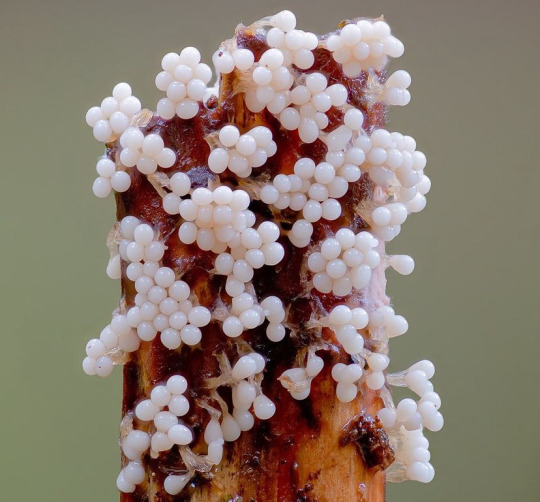
Oligonema verrucosum
by naturemybackyard
#oligonema verrucosum#oligonema#trichia verrucosa#naturemybackyard#slime mold#slime mould#myxomycota#myxomycetes#macro photography#forest floor#microbiota#microbiology#microorganisms#nature photography#clusters#trypo#texture
78 notes
·
View notes
Text
Microbiome Diversity: The Key to Unlocking Optimal Health and Immunity
In recent years, scientific research has shed light on the importance of the human microbiome in maintaining overall health and bolstering immunity. The microbiome refers to the trillions of microorganisms that reside in and on our bodies, working symbiotically with our cells to regulate numerous bodily functions. As functional medicine practitioners, understanding the critical role of microbiome diversity is essential for guiding our clients toward optimal health and immunity.
Definition of the Human Microbiome
The human microbiome refers to the collection of trillions of microorganisms, including bacteria, viruses, fungi, and other microbes, that live in and on our bodies. These microorganisms reside in various areas, such as the skin, mouth, gut, and reproductive organs, forming complex ecosystems that interact with each other and with our bodies.
#causesofhistamineintolerance#functional medicine#functionalhealth#funcionarios#cognitive functions#MicrobiomeDiversity#GutHealth#Microbiota#HealthyLiving#WellnessJourney#DigestiveHealth#Probiotics#GutFlora#HealthyGut#MicrobesMatter#HolisticHealth#HealthyMicrobiome#GutHealthMatters#MicrobiomeResearch#MicrobiomeScience
5 notes
·
View notes
Text

10 CONSEJOS PARA MEJORAR TU SALUD INTESTINAL
Incorporar estos hábitos saludables en tu vida no solo te ayudará a mejorar tu salud intestinal, sino que también tu salud física y emocional:
1. Remueve los alimentos inflamatorios como gluten lácteos y refinados
2. Descubre tus intolerancias o alergias alimentarias y elimina esos alimentos mientras sanas tu intestino
3.Incorpora alimentos prebióticos y probióticos.
👉Prebióticos que alimentan tu flora benéfica: plátano🍌, manzana🍎, cebolla, espárragos, ajo🧄,almidón resistente.
👉Probioticos, alimentos que contienen microorganismos vivos que mejoran tu microbiota intestinal: Kombucha, kéfir, vinagre de manzana no pasteurizdo, chucrut.
4. Consume alimentos libres de fertilizantes, herbicidas, colorantes, conservantes o modificados genéticamente (GMO). También prefiere el agua filtrada.
5. Evita automedicarte💊
El consumo de medicamentos daña la mucosa intestinal.
6. Evita comer muchas veces al día
👍Dale tiempo a tu intestino para digerir.
7. Incorpora el ayuno de 12 horas entre tu última comida y el desayuno ⏰
8. Practica ejercicio regular 🏋♀️
9. Aprende a gestionar tu estrés y sana tus emociones 🧘♀️
10. Toma el sol cada día y consume alimentos ricos en vitamina D 🌞
👉 La vitamina D estimula la producción de células T Reguladoras en el intestino fundamentales para mantener un ambiente antiinflamatorio
👉 Alimentos ricos en vitamina D: Pescados grasos como salmón🐠, atún🦈, yema de huevo🥚, champiñones, aguacate 🥑crustáceos y moluscos.
Incorporar en tu vida estos 10 maravillosos consejos te ayudará a reducir la inflamación sistémica, mejorar tu estado de ánimo y por supuesto mantener un intestino saludable.
#saludintestinal#saluddigestiva#intestinoirritable#inflamacionintestinal#microbiota#microbiotaintestinal#prebioticos#probioticos#intestino#intestinopermeable#segundocerebro#nutriglar#estadoanimico#vitaminad#glutenfree#ayuno#ejerciciosencasa#entrenamiento#buenoshabitos#siempreactivo#saludysuplementos#calidaddevida#ejercicios#saludemocional#saludmental#alimentosinflamatorios#alimentacionconsciente#alimentossaludables#nodieta#estres
3 notes
·
View notes
Text
Quelli che ti hanno detto fatti il vaccino ché tutti i medicinali hanno controindicazioni e non rompere le palle che li hai sempre presi, sono gli stessi che ti diranno non vedo che c'è di male a mangiare insetti visto che in Asia li mangiano da sempre e sono ancora vivi.
#cervelli in fuga#zombie#società malata#società#svegliatevi#manipolazioni#insetti#dieta#salute#microbiota#aprite gli occhi#sistema#rincoglioniti#mass media#propaganda#schiavi#covid
17 notes
·
View notes
Text
I drink to much coke that I think it's now part of my fucking micobiota and if I stop I will die.
#random quote from my head#autistic life#Aza Holmes would die if she was in my head#science baby#coke#microbiota#who follow the microbiota tag ?
2 notes
·
View notes